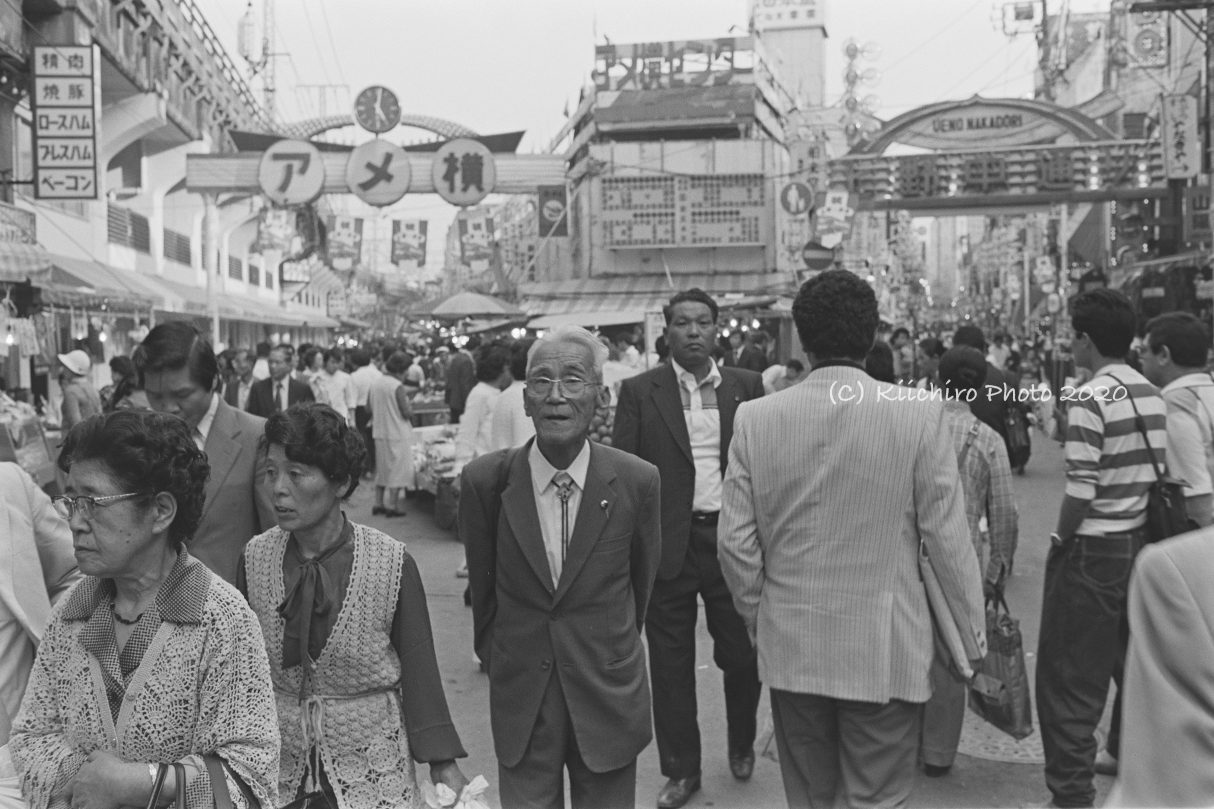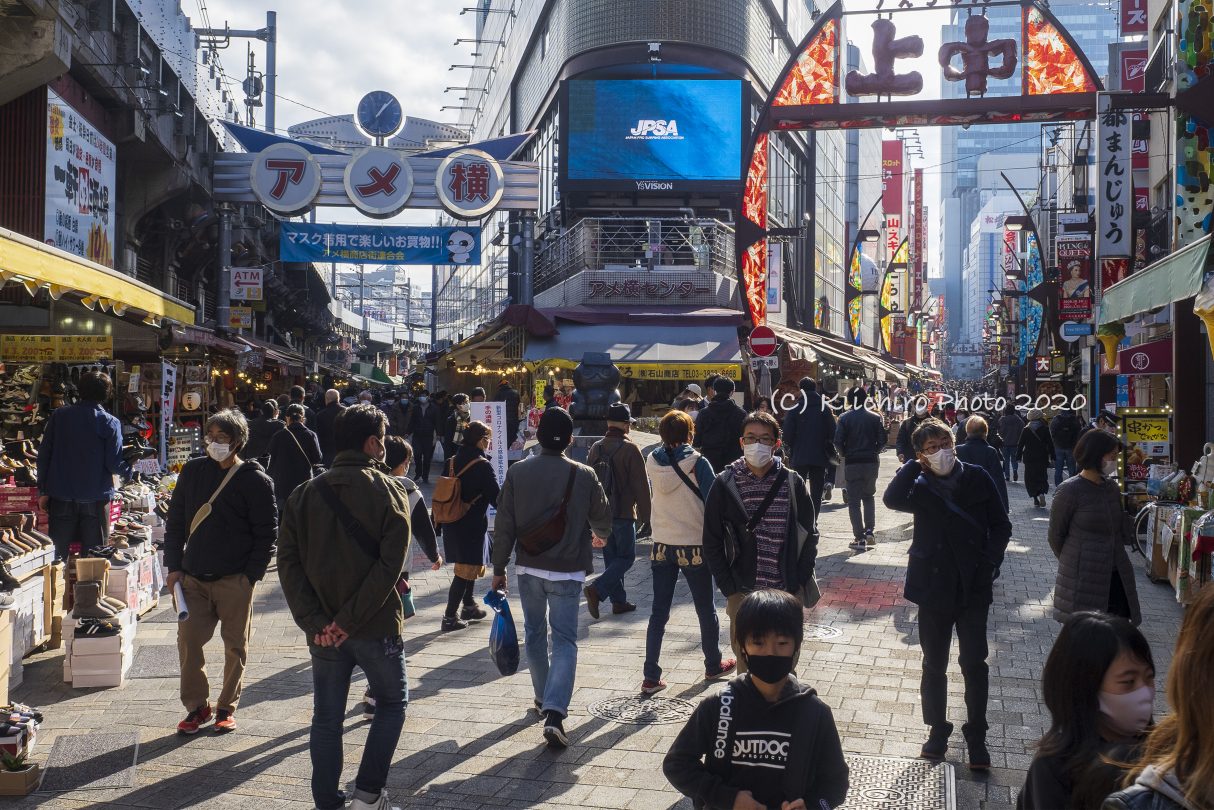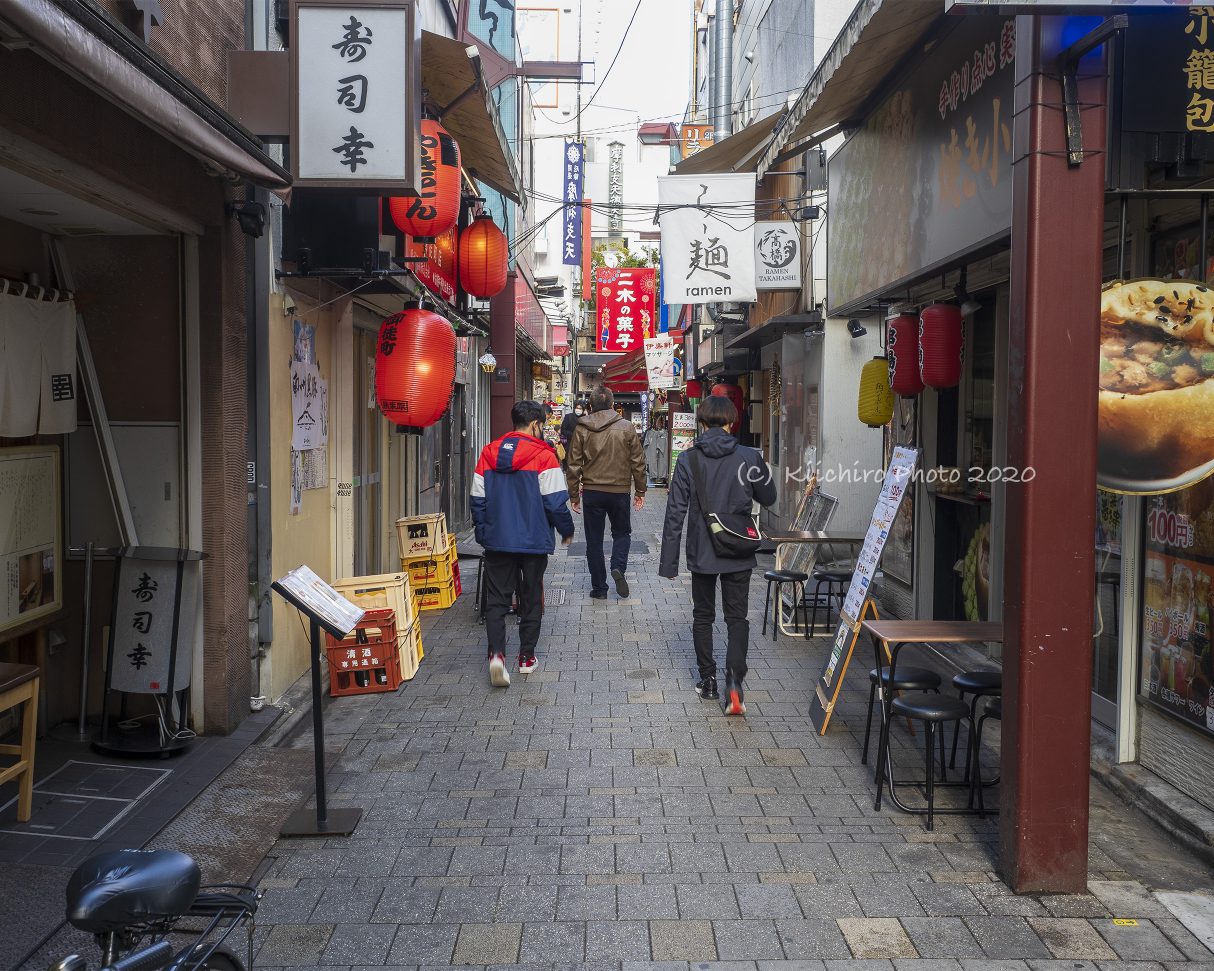

1982年ごろのアメヤ横丁 上野駅側入口
「アメヤ横丁」通称「アメ横」です。戦後の闇市で、飴を売る店が当時200軒以上あったこと、アメリカ軍の横流し品を売る店も多かったことから「アメヤ横丁」となり、略して「アメ横」と呼ばれるようになりました。豊富な品揃えと安さ、店員との交渉次第で安く買えることもある。屋台の店舗が並び、お祭りのような雰囲気で観光地としての人気も高いです。
Ameya Yokocho Ueno Station side entrance around 1982.
“Ameya Yokocho” is commonly known as “Ameyoko”.
In the black market after the war, there were more than 200 stores selling candy at that time, and there were many stores selling side-by-side goods of the US(United States of America) military, so it became “Ameya Yokocho”, and it came to be called “Ameyoko” for short. Depending on the abundant assortment and cheapness, and negotiations with the clerk, you may be able to buy cheaply. In addition, there are many stalls, and the atmosphere is like a festival, making it a popular tourist destination.


御徒町とは江戸時代、江戸城や将軍の護衛を行う下級武士、つまり騎乗が許可されない武士である御徒(徒士)が多く住んでいたことに由来する。1964年までは地域名として存在したが、現在は鉄道駅名として残るのみ。明治の後半から大正にかけて、寄席、見世物小屋、それに伴い多数の飲食屋台が集まりミニ浅草のような賑わいがあった。現在はアメヤ横丁を中心に多数の飲食店、商店が集まって賑わいがある。昔も今も「二木の菓子」看板は変わらず。
路地の人々の配置の妙がパフォーマンスアートのようで面白い。
Okachimachi is derived from the fact that during the Edo period, many low-ranking samurai who escorted Edo Castle and generals, that is, samurai who were not allowed to ride, lived there. It is the area name of Taito-ku, Tokyo that existed until 1964, and now it only remains as the name of the railway station. From the latter half of the Meiji era to the Taisho era, vaudeville, spectacle huts, and a large number of food stalls gathered together to create a lively atmosphere like mini Asakusa. Currently, many restaurants and shops are gathered around Ameya Yokocho and it is crowded. The signboard for “Niki’s sweets” hasn’t changed.The arrangement of people in the alley is like performance art and interesting.
インスタでは他にも80年代の写真と現在の写真、新旧の対比でご覧いただけます。
On Instagram, you can also see 80’s photos, current photos, and old and new comparisons.
Please see if you are interested.
https://www.instagram.com/tokyo_timeslip/


